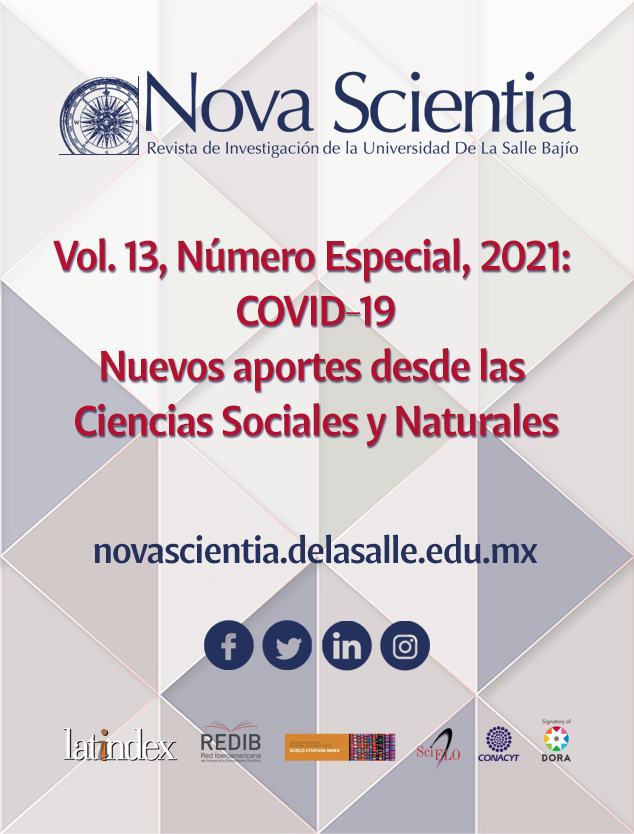Adjustment mechanisms and digital transformation of micro and small companies in the face of COVID-19 in Mexico
DOI:
https://doi.org/10.21640/ns.v13ie.2733Keywords:
Strategies, Pandemic, Economy, Organization, Survival, Activities, contingency, COVID-19, SARS-CoV-2, coronavirus, SMEs, economic crisis, e-commerce, confinement, online sales, Economic factors, National Consumer Price Index, economic impactAbstract
The health crisis that began at the beginning of 2020 has brought various consequences for the national and international economy. The consequences have been from human losses to the bankruptcy of companies, especially micro and small ones (MIPyMES). This forced companies to use different channels to continue with their activities. Thus, the objective of this research is to assess to what extent micro-enterprises were inclined to sell their products online due to the COVID-19 pandemic. In addition, to generate a framework of solutions for the different activities inside and outside the MSMEs in time of COVID-19.
Method: Descriptive study with a quantitative method. In the field work, a survey was applied to 200 companies between 1 to 50 employees from indistinct sectors during the month of July in Mexico City. To determine if MSMEs have digitized their activities, the observations given by this survey were used through statistical inference. That is, it was determined whether the proportion of companies that switched activities to online sales increased in relation to their activities before the pandemic, through a test statistic for the population proportion.
Results: The companies surveyed are mostly micro, that is, with a maximum of 10 workers belonging to the service sector and have been operating in the market for approximately 10 years. There is statistical evidence that the proportion of MSMEs that changed their activities to online sales increased, with respect to the way they carried out their activities before the pandemic.
Discussion: Periods of crisis are a perfect opportunity to develop innovation activities that allow organizations to excel and achieve objectives even in the most difficult moments. MSMEs must reinvent themselves to survive in this time of crisis, so the introduction of technology in companies becomes a necessity to continue with their activities and avoid the definitive closure.
Downloads
References
Bellamy, J., y Suwandi, I. (2020). COVID-19 y el Capitalismo Catástrofe- Cadenas de productos básicos y crisis ecológica-epidemiológica-económica. La Alianza Global Jus Semper.
Coninck D.D., d'Haenens D. & Matthijs K., (2020) Perceptions and opinions on the COVID-19 pandemic in flanders, belgium: Data from a three-wave longitudinal study, Data in Brief, 32, https://doi.org/10.1016/j.dib.2020.106060.
Figueroa Gonzalez, E. G. (2015). Rentabilidad y uso de comercio electrónico en las micro, pequeñas y medianas empresas del sector comercial. Revista Iberoamericana para la Investigación y el Desarrollo Educativo, 6(11).
Fitriasari, F. (2020). How do Small and Medium-sized Enterprises (SME) survive the COVID-19 outbreak? Journal Inovasi Ekonomi. 5. https://doi.org/10.22219/jiko.v5i3.11838
Gómez Rada, C. A. (2010). Diseño, construcción y validación de un instrumento que evalúa la calidad de vida laboral percibida en organizaciones colombianas, desde la teoría de respuesta al ítem. Psychologia. Avances de la disciplina, 4(1), 113-124.
Gottems, L., Carvalho, E., Guilhem, D., & Pires, M. (2018). Good practices in normal childbirth: reliability analysis of an instrument by Cronbach's Alpha. Revista latinoamericana de enfermagem, 26, e3000. https://doi.org/10.1590/1518-8345.2234.3000
Herrera, D. (2020). Instrumentos de financiamiento para las micro, pequeñas y medianas empresas en América Latina y el Caribe durante el Covid-19. Banco Interamericano de Desarrollo. Documento para discusión Nº IDB-DP-771.
INEGI. (2020). Indicadores de Ocupación y Empleo durante el primer trimestre de 2020. Cifras desestacionalizadas.
Martí-Noguera, J. J. (2020). Sociedad digital: gestión organizacional tras el COVID-19. Revista Venezolana de Gerencia, 25(90).
Sacha, V., & Panagiotakos, D. B. (2016). Insights in Hypothesis Testing and Making Decisions in Biomedical Research. The open cardiovascular medicine Journal, 10, 196–200. https://doi.org/10.2174/1874192401610010196
Sanabria Díaz, V. L., Torres Ramírez, L. A., & López Posada, L. M. (2016). Comercio electrónico y nivel de ventas en las MIPYMES del sector comercio, industria y servicios de Ibagué. Revista Escuela de Administración de Negocios, (80), 132-154.
Small Business Investor Alliance (2020). Survey of Impact of COVID-19 on Small Businesses. UNC Kenan Institute of Private Enterprise.
Texis Flores, M., Mungaray Lagarda, A., Ramírez Urquidy, M y Ramírez Angulo, N. (2011). Aprendizaje en microempresas de Baja California. Estudios Fronterizos, nueva época, 12(23), 95. DOI: 10.21670/ref.2011.23.a05
Vishwakarma, G. (2017). Sample Size and Power Calculation.
Downloads
Published
How to Cite
Issue
Section
License
Copyright (c) 2021 Nova Scientia

This work is licensed under a Creative Commons Attribution-NonCommercial 4.0 International License.
Conditions for the freedom of publication: the journal, due to its scientific nature, must not have political or institutional undertones to groups that are foreign to the original objective of the same, or its mission, so that there is no censorship derived from the rigorous ruling process.
Due to this, the contents of the articles will be the responsibility of the authors, and once published, the considerations made to the same will be sent to the authors so that they resolve any possible controversies regarding their work.
The complete or partial reproduction of the work is authorized as long as the source is cited.



